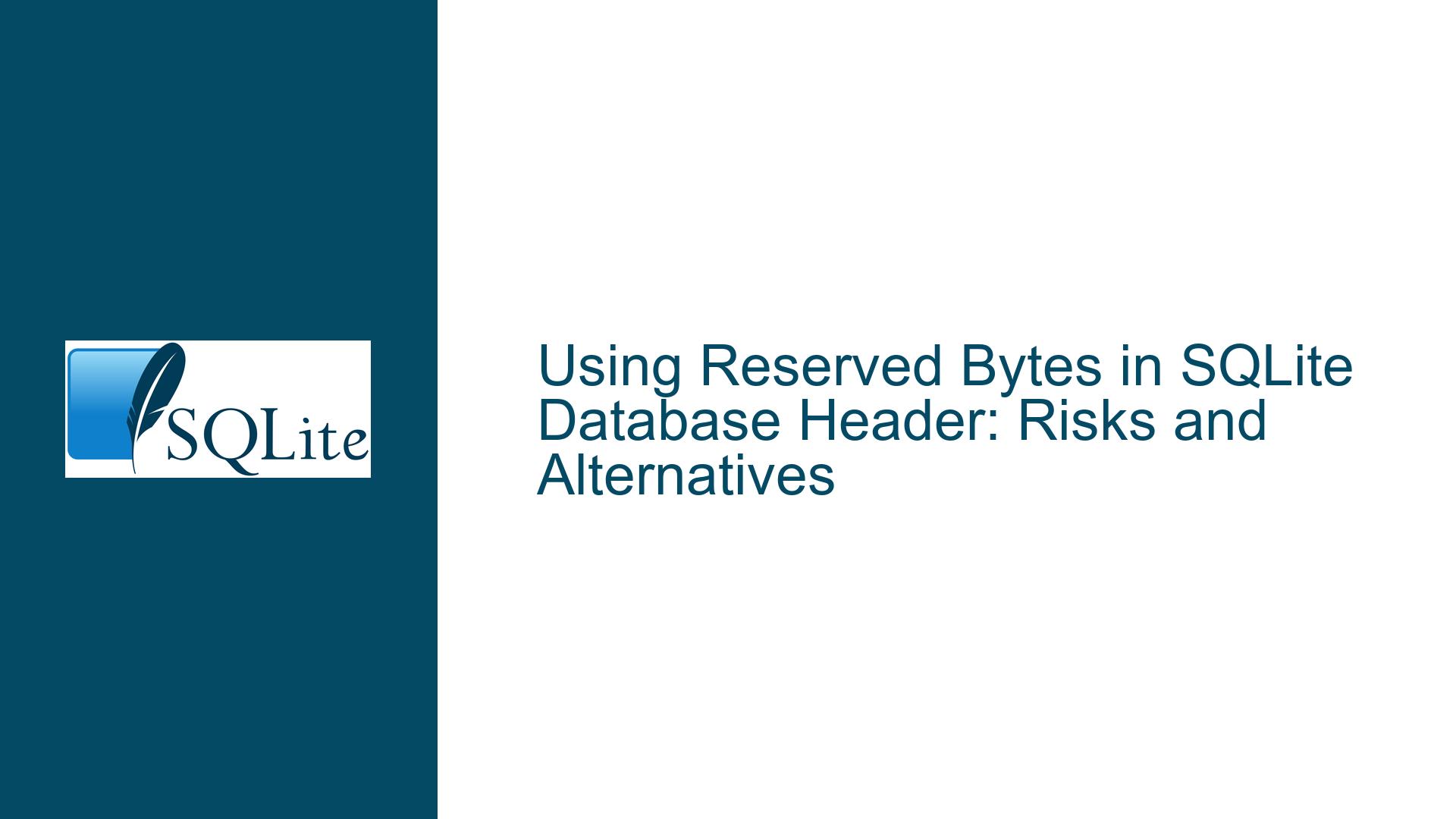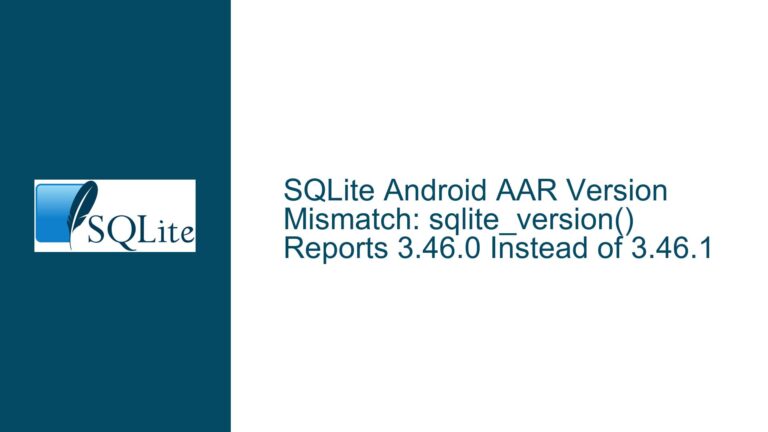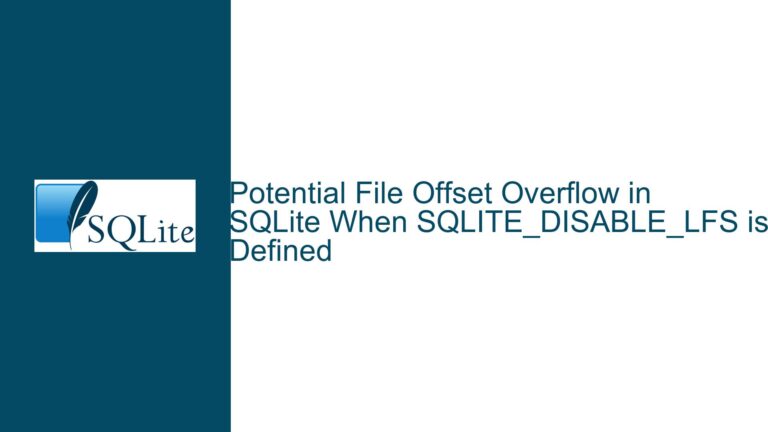Using Reserved Bytes in SQLite Database Header: Risks and Alternatives
Understanding the Role of Reserved Bytes in SQLite Database Header
The SQLite database file format is meticulously designed to ensure compatibility, performance, and extensibility. At the heart of this design is the database file header, a 100-byte structure that contains critical metadata about the database. Within this header, 20 bytes at offset 72 are explicitly marked as "reserved" for future use. These bytes are not currently utilized by SQLite but are reserved to accommodate potential enhancements or features in future versions of the database engine.
The reserved bytes serve as a forward-compatibility mechanism, allowing SQLite developers to introduce new functionality without breaking existing database files. By leaving these bytes untouched, SQLite ensures that future versions of the software can read and write to databases created by older versions, maintaining backward compatibility. However, this design also raises questions about whether these bytes can be repurposed by applications for custom data storage, as doing so could compromise the integrity and compatibility of the database.
Risks of Repurposing Reserved Bytes in SQLite Database Header
Repurposing the reserved bytes in the SQLite database header introduces several risks that can undermine the stability and compatibility of the database. The primary concern is that future versions of SQLite may utilize these bytes for new features or optimizations. If an application has already repurposed these bytes, the database file may become incompatible with the updated SQLite engine, leading to errors, data corruption, or complete failure to open the database.
Another significant risk is the potential for subtle bugs and inconsistencies. SQLite’s internal mechanisms are designed with the assumption that the reserved bytes are unused. If an application modifies these bytes, it may inadvertently interfere with SQLite’s operations, leading to unpredictable behavior. For example, certain operations like VACUUM, which reorganizes the database file, may overwrite or misinterpret the custom data stored in the reserved bytes, resulting in data loss or corruption.
Furthermore, repurposing the reserved bytes can create challenges for database maintenance and migration. Tools and utilities that interact with SQLite databases, such as backup solutions or third-party libraries, may not account for custom data in the reserved bytes. This can lead to compatibility issues when attempting to migrate or restore the database, as the custom data may be lost or misinterpreted during the process.
Safe Alternatives for Storing Custom Data in SQLite Databases
Instead of repurposing the reserved bytes in the SQLite database header, developers can employ several safe and robust alternatives for storing custom data. One such approach is to use the sqlite3_file_control function with the SQLITE_FCNTL_RESERVE_BYTES option. This mechanism allows applications to reserve a portion of each database page for custom use, ensuring that the data remains accessible without interfering with SQLite’s internal operations.
When using SQLITE_FCNTL_RESERVE_BYTES, SQLite leaves a specified number of bytes unused at the end of each database page. These reserved bytes can be accessed and manipulated by a custom Virtual File System (VFS) implementation, which intercepts file operations and manages the custom data. This approach maintains compatibility with future versions of SQLite, as the reserved bytes are explicitly managed by the application rather than being embedded in the database header.
Another alternative is to store custom data within the database itself using dedicated tables. By creating a table specifically for custom data, developers can ensure that the information is stored in a structured and accessible manner. This approach also allows for encryption and access control, as the data can be encrypted using application-specific keys and accessed only by authorized components of the application.
For scenarios where the custom data must remain hidden or obfuscated, developers can employ techniques such as steganography or custom encoding schemes. These methods allow the data to be embedded within the database in a way that is not immediately apparent, providing an additional layer of security. However, it is important to note that these techniques should be used judiciously, as they can complicate database maintenance and increase the risk of data loss if not implemented correctly.
In conclusion, while the reserved bytes in the SQLite database header may seem like an attractive option for storing custom data, doing so introduces significant risks to database compatibility and stability. By leveraging safe alternatives such as SQLITE_FCNTL_RESERVE_BYTES or dedicated tables, developers can achieve their goals without compromising the integrity of the database. These approaches ensure that the database remains compatible with future versions of SQLite and can be maintained and migrated with minimal risk of data loss or corruption.






